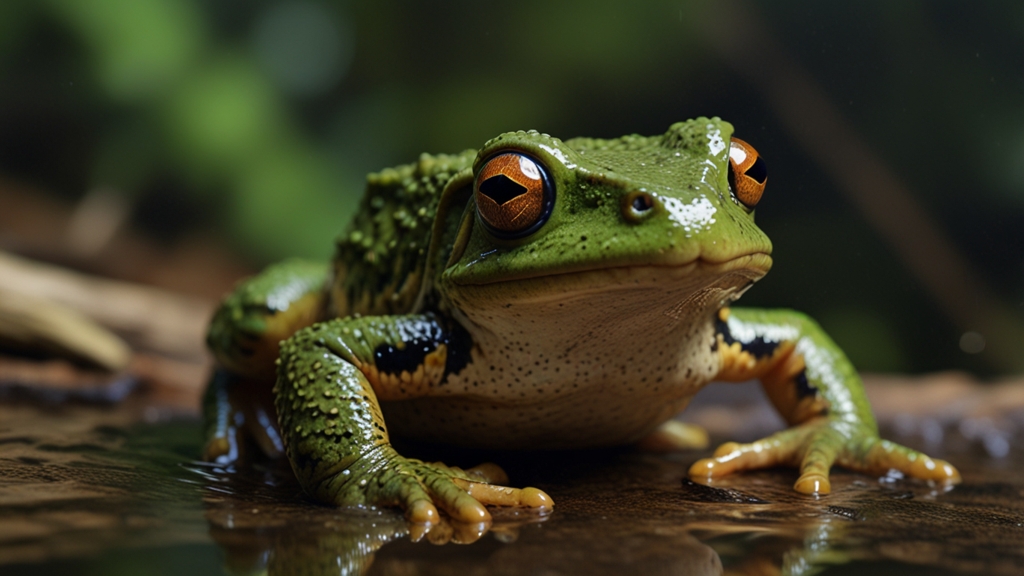What Makes Amphibians Unique? Here's Everything You Need to Know
Amphibians are a fascinating group of animals that occupy a unique place in the animal kingdom. Evolving from aquatic ancestors, they have developed an extraordinary array of adaptations that allow them to thrive both in water and on land. This article aims to explore what makes amphibians truly unique and provides insight into their characteristics, lifecycle, and ecological importance.
Characteristics of Amphibians
Amphibians are a class of vertebrates that includes frogs, toads, salamanders, newts, and caecilians. They are distinguished by several key characteristics:
- Moist Skin: Unlike reptiles, which have scaly skin, amphibians possess moist, permeable skin that allows for cutaneous respiration (breathing through the skin). This adaptation is crucial for their survival, particularly when they are in water.
- Dual Life Cycle: The term "amphibian" derives from the Greek word "amphibios," meaning "both lives." This reflects their ability to live both in water and on land. Most amphibians undergo a metamorphic transition from larval to adult stages, typically starting as aquatic larvae (tadpoles in frogs) and gradually transforming into terrestrial adults.
- Glandular Secretions: Amphibians have specialized glands in their skin that secrete a variety of substances. Some of these secretions serve as protective toxins against predators, while others help keep their skin moist or assist in communication.
The Lifecycle of Amphibians
One of the most remarkable aspects of amphibians is their complex lifecycle, which is typically divided into four stages: egg, larva, juvenile, and adult. Let's delve deeper into each stage:
Egg Stage
Amphibians generally lay their eggs in water or moist environments. The eggs are usually coated with a gelatinous substance that protects them from desiccation and predators. The number of eggs can range from a few dozen to several thousand, depending on the species.
Larval Stage
Once hatched, amphibian larvae live in water and have distinct aquatic features, such as gills for breathing and tails for swimming. For instance, frog larvae, commonly known as tadpoles, feed on algae and gradually develop legs and lungs as they grow.
Juvenile Stage
As larvae undergo metamorphosis, they transition into the juvenile stage, shedding their gills for lungs and their tails (in the case of frogs and toads) for legs. This process can take anywhere from a few weeks to several months, depending on the environmental conditions and the species.
Adult Stage
Adult amphibians are typically equipped for both aquatic and terrestrial environments. Frogs, for example, are proficient swimmers and jumpers, while salamanders are skilled walkers and climbers. Some species may remain aquatic for their entire lives, while others spend the majority of their time on land, returning to water only to breed.
"The metamorphosis of amphibians is not merely a change in physical form, but a complete lifestyle transformation from water to land." - Renowned Herpetologist
Ecological Importance of Amphibians
Amphibians play a vital role in maintaining the balance of ecosystems. Here are a few ways they contribute:
- Pest Control: By feeding on insects and other invertebrates, amphibians help control pest populations, reducing the spread of diseases.
- Food Source: They are a crucial part of the food web, serving as prey for a variety of predators, including birds, mammals, and reptiles.
- Indicators of Environmental Health: Due to their permeable skin and sensitivity to environmental changes, amphibians are considered bioindicators. Their presence, absence, or health status can provide valuable information about the state of an ecosystem.
Conservation Challenges
Despite their importance, amphibians are among the most threatened groups of animals. Factors contributing to their decline include habitat destruction, pollution, climate change, invasive species, and diseases such as chytridiomycosis. Conservation efforts are essential to protect these unique creatures and the roles they play in our ecosystems.
"Amphibians are the canary in the coal mine; their decline is a clear signal that something is wrong with our environment." - Environmental Scientist
Conclusion
Amphibians are extraordinary animals that have adapted to live both in water and on land, with a lifecycle that highlights their versatility. Their unique characteristics, ecological roles, and the challenges they face underscore the importance of their conservation. By protecting amphibians, we are also ensuring the health and balance of our ecosystems for future generations.








